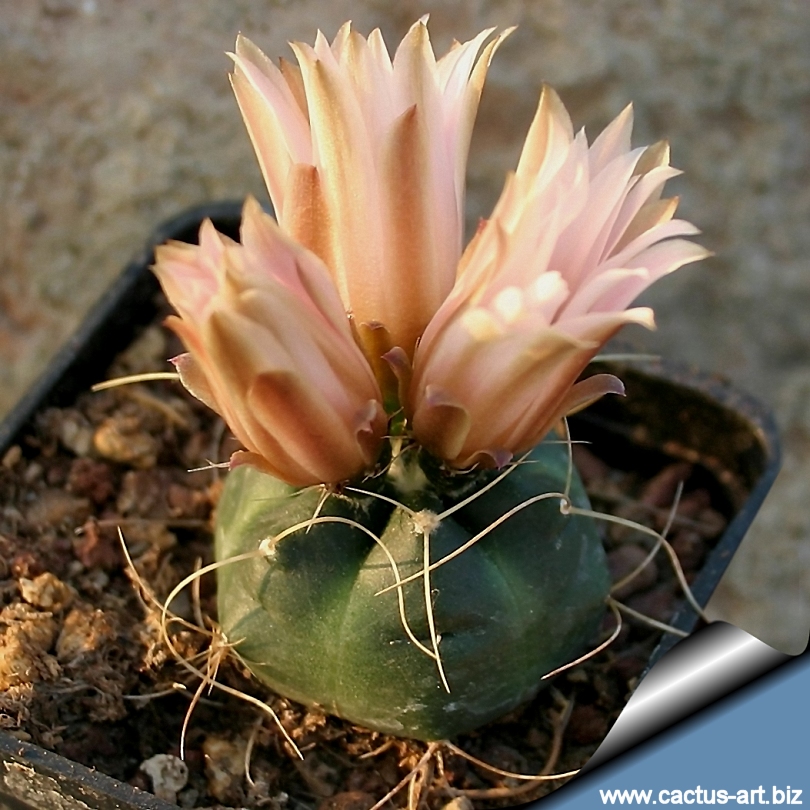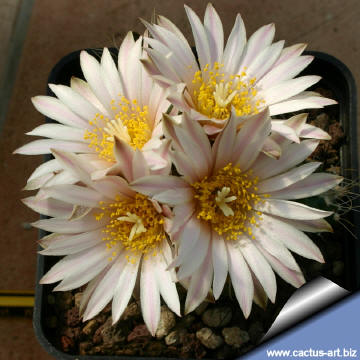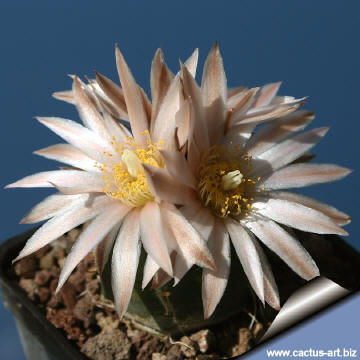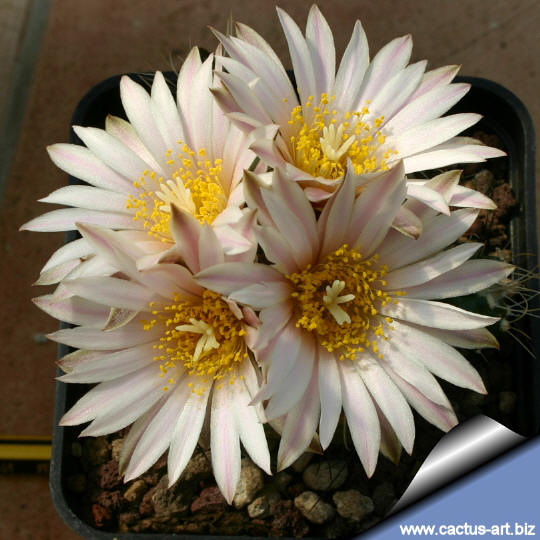|
|
|

Echinocereus knippelianus v kruegeri
SB939 n Ascencion, NL. Mexico
The flowers are pale flesh-coloured at the apex.
|
|
Description:
Solitary or slowly clumping cacti.
Stem: Plump, soft, flattened or globose , dark green with
slightly lighter ridges, usually smaller than the normal
E.
knippelianus.
Ribs: 5 to 7 ribs, either tuberculate or slightly wavy, separated
by broad furrows
Areoles: small with whitish felt 5 mm inches apart.
Spines: Nearly spineless whit 1 to 3 thin yellow spines, 3 to 15
mm long
Flowers: Flesh coloured (clear pastel-pinkish) funnel-
shaped flowers, 2.5-4 cm long, up to 6 cm in diameter in spring and
summer. Flowers push through the body from the crown.
Root: Thick tuberous root that pulls the plant below ground to
avoid the hot sun.
|
|
 |
 |
|
Photo of conspecific taxa, varieties, forms and
cultivars of Echinopsis knippelianus.
-
E. knippelianus:
plump green body, big taproot, bristly spines. Pink flowers at the
sides.
-
E. knippelianus v. krugeri: miniature form with fat green
body, soft bristly spines, whitish or flesh-coloured flowers at centre
-
E. knippelianus v. reyesii: Fat green bodies, stiffer
spines. Larger, deep pink flowers at centre.
Advertising
|
|
|
|
|
|
|
Family:
Cactaceae (Cactus
Family)
Scientific name:
Echinocereus
knippelianus
var. kruegeri Glass & Foster 1978
Published in: Blum et al. 1998:248.
TL:
Mexico, Nuevo Leon, north of Ascencion near San Juanito,
Glass & Foster 3902, 1 Mar. 1972 (POM).
Origin:
Mexico, Sierra Madre Oriental Mountains at over 2200 m elevation.
Habitat: This high mountain cactus is found growing in the
semi-shade of rocks and pines.
Conservation status: Listed in
CITES appendix II.
Synonyms:
-
Echinocereus knippelianus ssp. kruegeri (Glass & Foster) Blum &
Lange
- Echinocereus knippelianus var. kruegeri Glass &
Foster 1978
-
Echinocereus knippelianus var. kruegeri fa. reyesii* Parker
1996:3 nom. nud.
- Echinocereus knippelianus var. reyesii Lau
1980b
|
|
|

|
Cultivation: In culture E.
knippellianus v. kruegeri is without problems and
regularly shows its flesh coloured flowers if we provide an
adequate winter rest period. It is sensitive to
overwatering (rot prone) needs good drainage, fertilize with half
strength liquid fertilizer in summer. Keep
drier and cool in winter. Need full sun; Very cold resistant hardy to -12° C or less for short periods of time.
Propagation: Seeds (usually), also can be grown from s cutting as it
slowly branches from the base. |
|


|
|